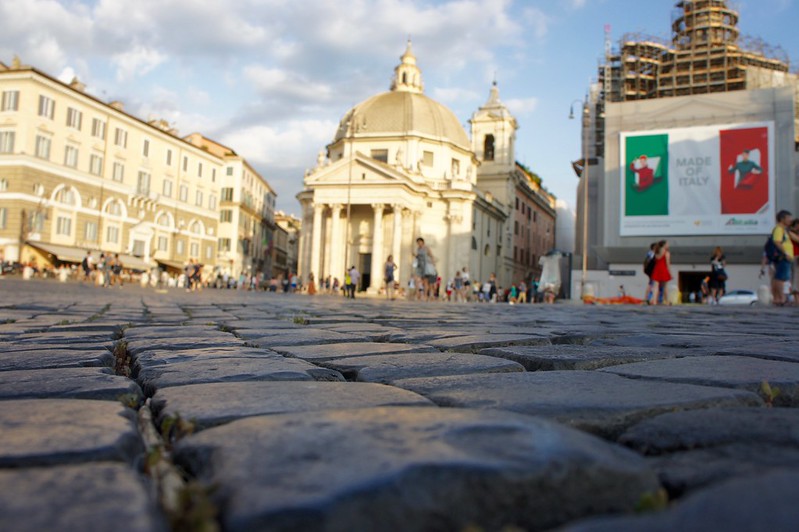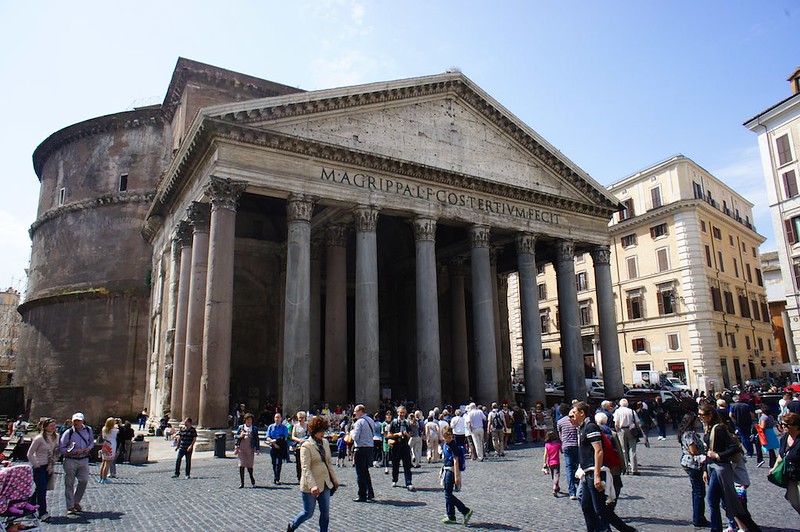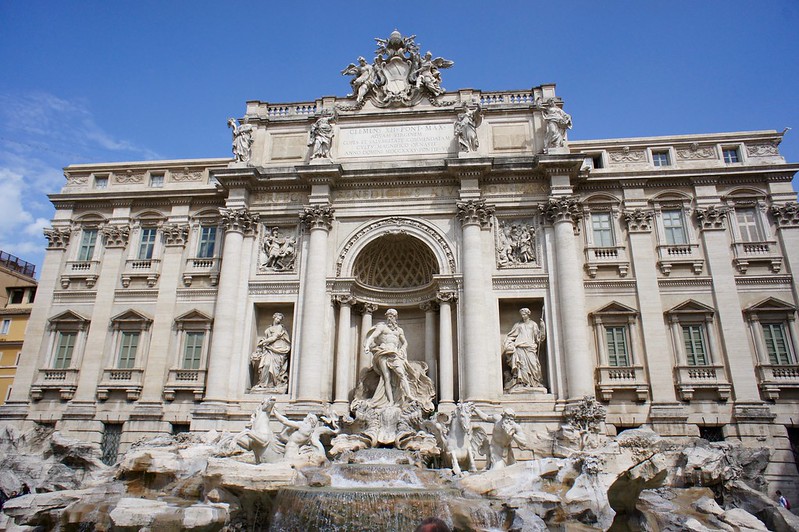Italian ranks 22nd by the number of people in the world who speak it as their native tongue but is the 4th most studied language in the world. Melodic, phonetic, and saturated in La Dolce Vita romance, Italian is a favorite for everyone from professional singers honing their craft to Italophiles looking to immerse themselves in the culture.
Not everyone has the time or inclination to study Italian before traveling to Il Bel Paese, however. Though you certainly don’t need to be a fluent speaker to get around in Italy (younger Italians and those who work in hospitality almost always have a working knowledge of English), having a basic “pocket vocabulary” will help you connect with locals and navigate some of the most common situations in traveling and dining.
Here are the top ten Italian groups of words and phrases you should know to make the most of your trip:
Being Polite in Italian
Nothing will open doors and endear you to locals like good manners. Before heading to Italy, make sure you have your basic please-and-thank-you vocab memorized, even if it’s the only Italian you plan to use during your trip.
The big four that you are likely to use within hours of arrival are:
- grazie (thank you)
- per favore (please)
- prego (you’re welcome)
- mi scusi (excuse me)
You’ll also need to know how to greet and say goodbye:
- buongiorno (good day; used for hello or goodbye from the morning through midday)
- buona sera (good evening; used for hello or goodbye from early afternoon through the late hours)
- buona notte (good night; only used for goodbye at the very end of the day…for example, when you’ve closed down the restaurant and everyone is clearly headed to bed)
- arrivederci (goodbye)
- ciao (hello or goodbye; ciao is a familiar form of greeting – along the lines of “hi” – that should only be used with people you know, children and teens, and in very casual settings)
Introducing Yourself
There are a couple of ways to introduce yourself in Italian. You can say:
“Buona sera. Io sono Jane.” – “Good evening. I’m Jane.”
Or
“Buona sera. Mi chiamo Jane.” – “Good evening. My name is Jane.”
Both are fine, though the first is more common. To respond, “piacere” (pleased to meet you) is commonly used, though some sticklers criticize this usage as grammatically incorrect.
Asking for Directions
You may think you’ll be getting around with Google Maps when exploring Italy for the first time, but international data issues, weak signals, and confusing mazes of winding, narrow lanes where it’s hard even for satellite technology to get its bearings may throw a wrench into the works.
Though getting lost in Italy is part of its charm, you occasionally may need to ask for directions from local passersby. Here’s how:
The easiest way is simply “Mi scusi, per andare a…?” (Excuse me, to get to…?)
“Mi scusi, per andare alla stazione?” – (Excuse me, to get to the station?)
It may seem rather abrupt to English ears, but this straightforward phrase is the standard for asking for directions, and the polite “mi scusi” softens it a bit.
Of course, once you ask for directions in Italian, you have to be prepared to understand the Italian answer. The most common directions include:
- “Giri a sinistra” – “Turn left”
- “Giri a destra” – “Turn right”
- “Vada dritto” – “Go straight ahead”
- “Prenda (Via Garibaldi)” – “Take (Via Garibaldi)”
Reconfirming Directions
You’ve asked for directions, understood the answer, and are on your way. But doubts linger. How do you reconfirm that this is the right road, line, train, bus, or ferry? In Italian, the easiest way to reconfirm that you are not about to head in the opposite direction of your final destination is to simply ask “Mi scusi, questo è…? (Excuse me, is this the…?). For example:
- “Mi scusi, questa è la via per la Fontana di Trevi?” – Excuse me, is this the road to the Trevi Fountain?
or
- “Mi scusi, questa è la fila per entrare?” – Excuse me, is this the line to enter?
- “Mi scusi, questo è il treno per Venezia?” – Excuse me, is this the train to Venice?
- “Mi scusi, questo è l’autobus per la stazione?” – Excuse me, is this the bus to the station?
- “Mi scusi, questo è il traghetto per Messina?” – Excuse me, is this the ferry to Messina?
Finding the Restroom
Yes, it’s the punchline of a million jokes, but knowing how to ask for the restroom is simply a travel must no matter where you’re headed…especially because there is no hand gesture out there that will get the message across in an, ahem, G-rated way.
If you memorize just one Italian phrase before your trip, it should be this simple yet essential question “Scusi, dov’è il bagno?” (Excuse me, where is the restroom?) Restrooms can also be called “i servizi”, “il toilette”, “il gabinetto”, or “il WC” but “il bagno” is universally recognized.
As with asking any sort of directions, be prepared to understand the answer to your question! In a restaurant, you may come across a phrase like “In fondo a destra/a sinistra.”, which means “In the back on the right/left.”,“Di sotto” (Downstairs), or “Di sopra” (upstairs).
Requesting the Check
In Italy, dining is a leisure activity and diners tend to linger much longer at the table than in the US (there are very few restaurants that have two seatings; that table is yours until closing time). It is considered bad form for servers to bring the check to your table until you request it, so if you don’t know how to do that, you may find yourself sitting there for quite a while before being able to settle up.
To request your check, simply say “Il conto, per favore.” (The bill, please.)
Asking for Prices
One of the top activities in Italy is shopping, from the bustline open-air markets and tiny artisan workshops to flagship designer stores. Though Italian vendors and shops have become better at displaying their prices in recent years, it is still quite common to find shops with few or no prices marked, so knowing how to ask how much something costs is helpful. Market vendors and small, independent boutiques have some flexibility as far as prices, so a smile and some polite phrases in Italian (as well as buying multiple items and paying in cash) can help you snag a bargain. Larger chain stores, of course, have fixed prices.
To ask how much something costs, simply say “Mi scusi, quanto costa?” (Excuse me, how much does this cost?) while indicating the item. Want to gently suggest a discount? “Si può fare lo sconto?” (Can you offer a discount?) may be your golden ticket.
Paying with a Credit or Debit Card
Though attitudes towards paying with credit or debit cards are rapidly changing in Italy, it’s still a good idea to carry a bit of cash (contanti) with you to pay for small items like a gelato or an espresso. Though payments of less than about €20 by credit or debit card are still somewhat frowned upon as a hassle, virtually all businesses in Italy accept credit and debit cards. When in doubt, simply ask “Posso pagare con la carta di credito?” (Can I pay by credit card?).
To avoid getting caught with an empty wallet, withdraw some cash for the day from an ATM in the morning. To find the nearest ATM, ask “C’è un bancomat qui vicino?” (Is there an ATM machine near here?)
Using Wi-Fi
Internet access is becoming increasingly a necessity rather than a luxury when traveling. In Italy, most hotels, restaurants, and cafés offer Wi-Fi to their customers, which makes it easier to get around when you don’t have data roaming.
You can ask “C’è il Wi-Fi?” (Do you have Wi-Fi?) or “Posso connettermi al Wi-Fi?” (Can I use your Wi-Fi?) to connect…and don’t forget to ask for the password “Qual è la password?” (What’s the password?)
Emergency Situations
Luckily, emergencies aren’t really part of the “common situations” category in Italy, but it’s still a good idea to know a few basic phrases just in case you find yourself caught in a strike, ill, or the victim of theft.
The Italian word for strike is “sciopero” and the most common strikes that effect travelers are transportation (trains, buses, air travel, and taxis) and state employees (museum staff, gas stations, and toll booth operators). If you get to the train station, airport, or taxi stand and find mayhem, you’ve most likely found yourself in the midst of sciopero chaos.
If you are having a health emergency, you may need to know a few phrases like:
- “Sono ferito (if male)/Sono ferita (if female). Mi serve un medico.” (I’m injured. I need a doctor.)
- “Non mi sento bene. Devo andare al pronto soccorso.” (I’m ill. I need to go to the emergency room.)
- “Dove sta la farmacia più vicina?” (Where is the nearest pharmacy?)
- “Chiama il 118, per favore.” (Please call 118 – the ambulance)
If you’ve been the victim of theft or been pickpocketed, you may need to know the following:
- “Mi hanno rubato la borsa/il portafoglio.” (My purse/wallet has been stolen.)
- “Dove sta la caserma più vicina?” (Where is the nearest police station?)





